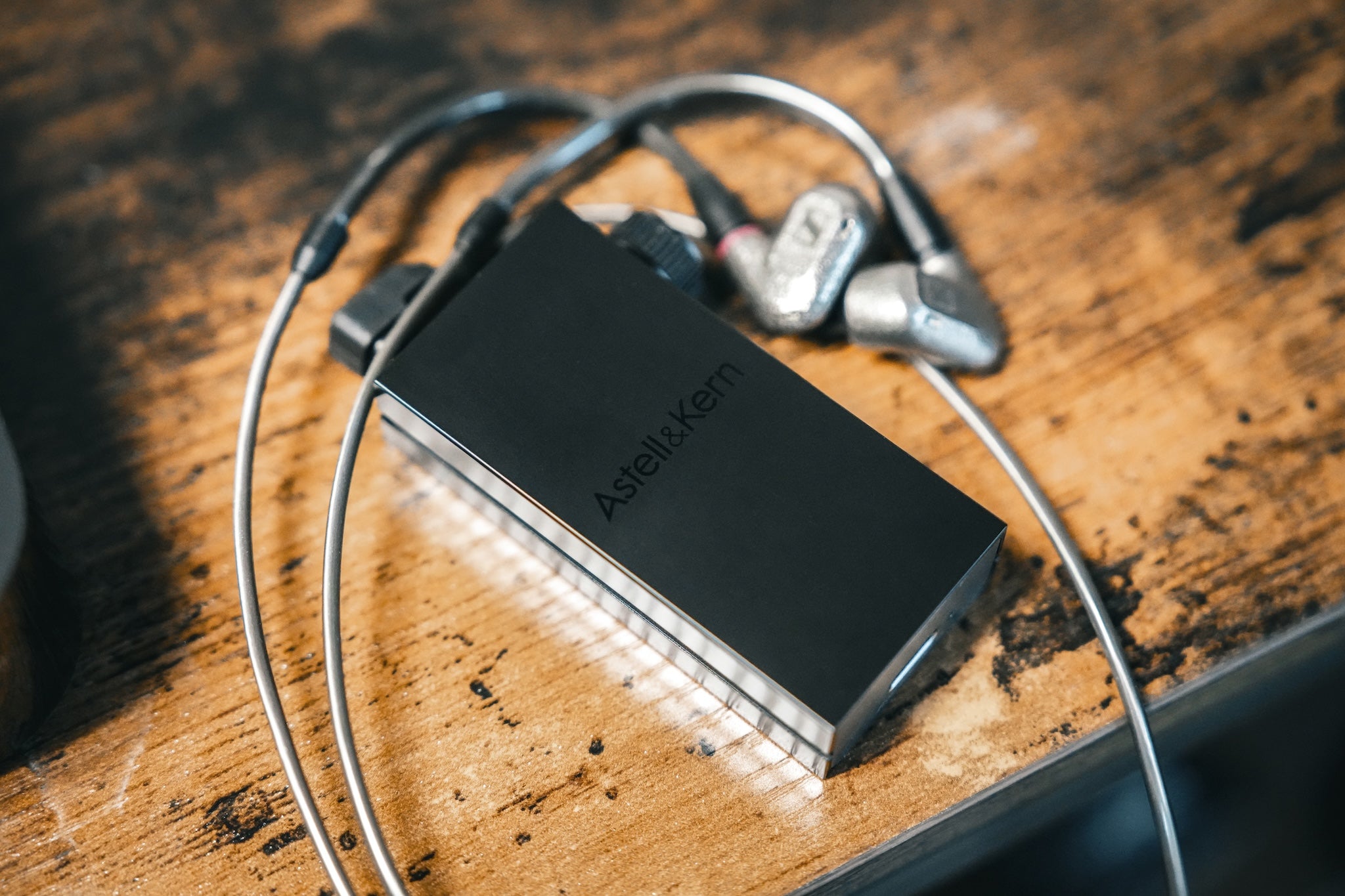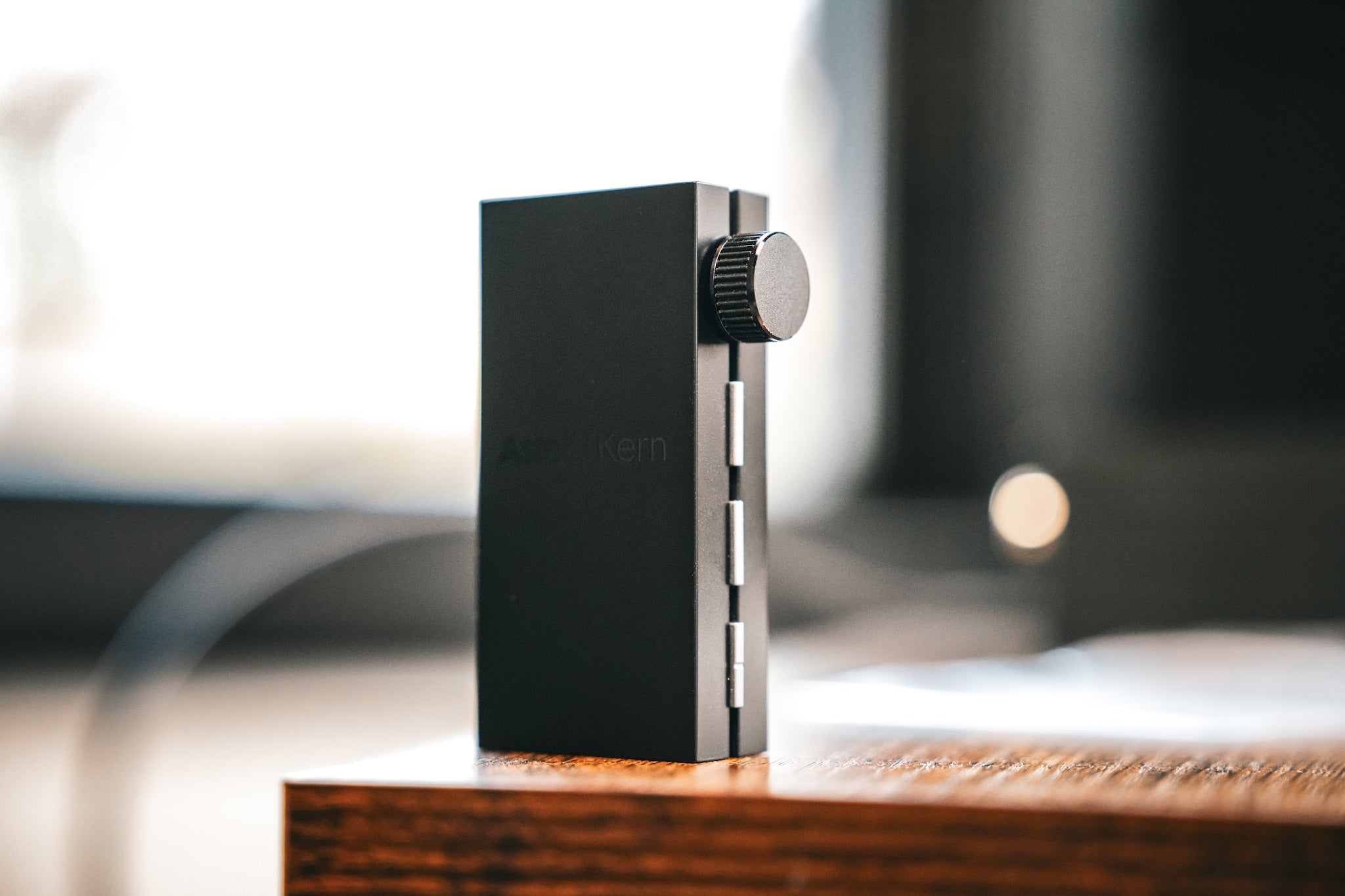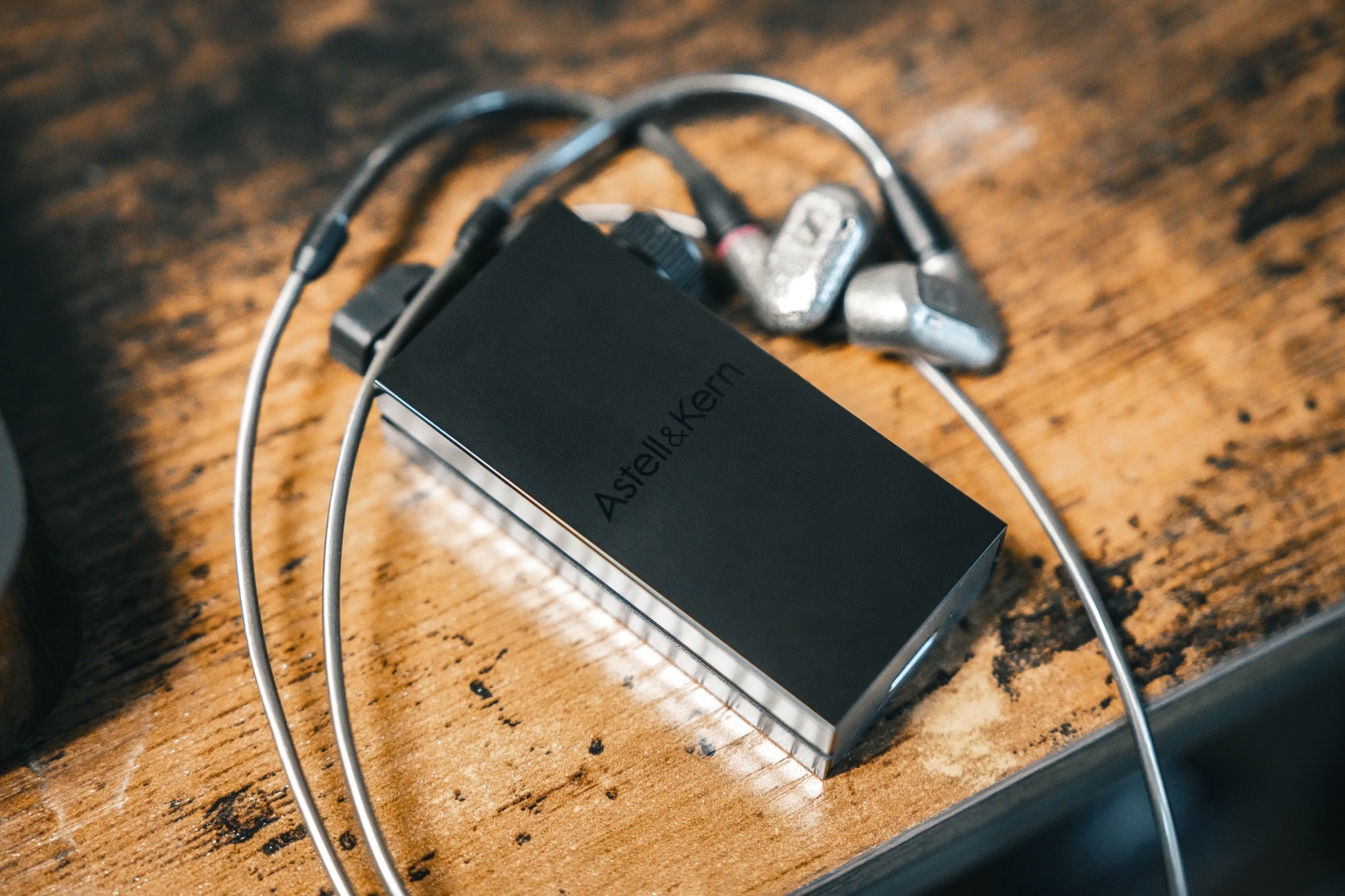Astell&Kern has a reputation for providing some of the best sound and build quality in the portable space, but while they’re constantly innovating in their digital audio players' DAC and amp components, they don’t have the best reputation for wireless and Bluetooth performance. AK HB1 aims to elevate the brand's standing in that space and show that Astell&Kern can deliver sound, design, and strong wireless performance.
Build and Design
You can almost always count on Astell&Kern for stunning looks and devices that feel great in your hand, but, while AK HB1 would seem like a solid looking and feeling product from most other brands, it comes up short of our expectations and A&K’s standards. The design itself is a simple black box, with a volume wheel on the side, connection on the top and bottom, and functional buttons below the volume wheel. All the external components of the device are plastic, and the controls lack the sort of satisfying tactile feedback that most A&K devices provide.
While I had to skim the user manual to fully understand all the quirks of HB1’s operation, the device was easy to use, and I didn’t have any trouble with any of the functions. Bluetooth pairing, charge mode, USB-DAC mode, and the rest all worked exactly as expected. With only three buttons, there are a number of functions that need to be activated by double taps on the buttons which can be a bit cumbersome, but remains generally responsive.
The package includes USB-C and Lightning OTG, along with a USB-C to USB-C charge cable. The OTG cables have a cloth wrap with a nice feel to them. I also tested them out with a few other devices, and they seem to work great with any USB device. The charge cable can also be used to connect HB1 to a computer. When it’s connected to a device that can be both a music and power source HB1 has a toggle for charging mode that allows you to engage playback without charging to eliminate potential background noise. It’s also worth noting that in Bluetooth mode, both the source device’s and the HB1’s volume controls are active, meaning that you need to balance between the two. In USB mode, HB1 will disable your source volume.
You can also use the AK Connect App on iOS or Android to manage and configure some of HB1's features. App features include Car Mode, EQ, DAC Filters, and an Auto Power Off feature. The EQ is less advanced than the equalizers found on A&K's DAPs, but allows you to offer some broad tuning changes across 5 EQ bands.
All together it’s a nice package with solid functionality, that comes up just short of Astell&Kern’s high standards for build and design. Can the sound – and particularly the wireless audio performance – make up for the more basic build on HB1?
Sound
Sonically, HB1 totally exceeded our expectations. Even using the Bluetooth, the sound was, clean, detailed, spacious, and resolving. HB1 has a neutral, reference tuning, loaded with detail and clarity, but also avoids any sense of graininess or harshness. Using the USB connection, HB1 had best in class sound, and without careful listening, you don’t really miss much when you flip it to Bluetooth mode.
Along with the overall sound quality, I was impressed at how well HB1 handled over-ear headphones, especially considering the balanced output is only rated at 4V. All of your usual suspects in the “easy to moderately hard to drive over-ear headphones” category, like the Meze 109 Pro, Focal Celestee, and HIFIMAN Ananda Nano, performed well. Likewise, there was no perceptible background noise with low impedance IEMs, using either the Bluetooth or USB input.
The clean, highly transparent output makes HB1 work well across the board for headphones and IEMs. Don’t expect it to warm up your bright IEMs or clean up muddiness in bassy ones, but do expect a clear bridge between your source and headphones that doesn’t get in the way of your listening experience.
Comparison: iFi GO bar, iFi GO blu
HB1 has two main functions:
- Ultra-portable USB DAC/Amp
- Bluetooth DAC/Amp
This fits it right between two popular products from iFi Audio: the GO bar and GO blu. GO bar has become somewhat of a benchmark in the ultra portable class for its hefty power output and pretty broad feature set. GO blu remains one of the best Bluetooth DAC options under $500. Technically GO blu can also function as a portable USB DAC, but it doesn’t include the necessary cables to be “plug and play” out of the box for that.
In terms of features, the iFi units both offer XBass and XSpace functions to provide more options sonically, while GO bar also provides iEMatch for reducing background noise with IEMs. I’ve always liked the way XBass tastefully enhances the bass for your headphones, so that's a win for iFi, but even with the XSpace on, HB1 delivers a more spacious soundstage than either GO bar or GO blu. HB1 has an EQ feature, but needing a separate app and not being able to immediately toggle it on or off makes it more situational (even if its more powerful) than XBass. Similarly GO blu and GO bar can both be a bit noisy with sensitive IEMs – and only GO bar has the iEMatch option – but HB1 simply has a lower noise floor out of the box, removing the need for iEMatch.
In USB mode (using the cables provided with the GO bar), I felt that GO blu and HB1 had a clear advantage over GO bar in terms of the level of detail and the quality of the imaging. GO bar has more total output power, but at higher volumes, the sound becomes somewhat congested. Both GO bar and GO blu have a warmer tonality out of the box, with smoother highs and a touch of extra bass. HB1 is more neutral, and presented the stronger clarity and detail of the three. With Bluetooth, HB1 remained very strong, while GO blu loses a bit of clarity and coherence.
Between the three, if you need the most power possible in the ultra-portable form factor, GO bar is your best option. If you prefer a warmer sound or need a simple bass boost button, either of the iFi units are great picks. If you don’t mind buying the extra USB OTG cable, the overall detail provided by GO blu is excellent for the price and form factor, and it does really shine with USB operation. HB1, however, has the best overall performance across both Bluetooth and USB. Neither of the other devices provide the same level of detail and separation, making HB1 the clear best on pure sonic performance – so long as you can live without bass boost.
Final Thoughts
I was a bit nervous when I pulled HB1 out of the box and found that the build quality didn’t match Astell&Kern’s typical high standards. If there was a bit of expense spared on the shell of the unit, it’s only because clearly none was spared anywhere else. The general function of HB1 as a portable DAC is excellent, and the sound quality is among the best in its class, with a clean, detailed, reference tuning that will perform well with your whole collection.








